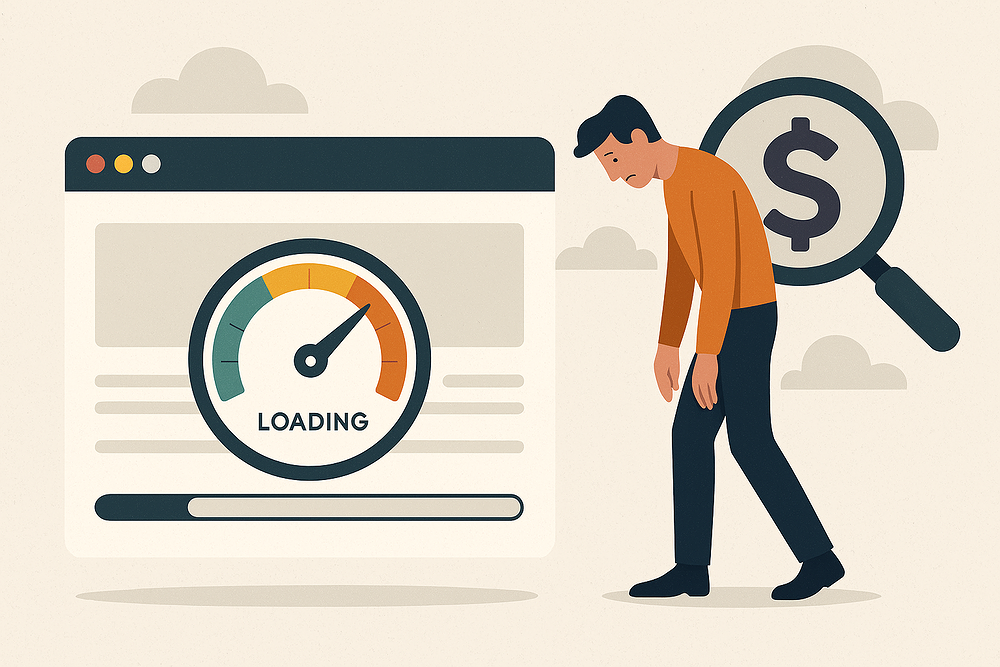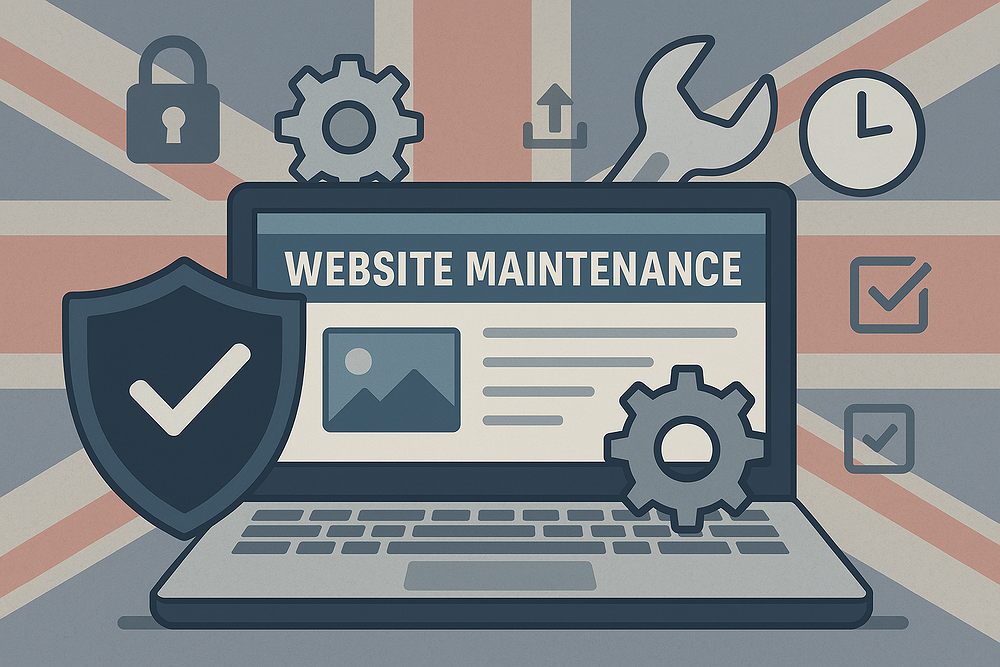Website Loading Speed: The Hidden Factor Costing You Customers

In today's fast-paced digital landscape, your website often serves as the first impression potential customers have of your business. While you might invest considerable resources into creating visually appealing designs and compelling content, there's a crucial element that many organisations overlook: website loading speed.
The Startling Statistics
Let's begin with some eye-opening facts:
- 40% of visitors will abandon a website that takes more than 3 seconds to load
- Each one-second delay in page load time results in 7% fewer conversions
- 79% of customers who report dissatisfaction with website performance are less likely to purchase from that site again
- Mobile users are 5 times more likely to abandon a task if the website isn't optimised for mobile devices
These figures reveal an uncomfortable truth: your beautifully designed website might be driving away potential customers before they even see your content.
Why Speed Matters More Than Ever
The Attention Economy
We live in what experts call an "attention economy" where human attention is a scarce and valuable commodity. The average person's attention span online has shrunk to approximately 8 seconds – less than that of a goldfish. When your website lags, you're effectively asking visitors to spend their limited attention reserves waiting for your content rather than engaging with it.
Mobile Dominance
With over 60% of web traffic now coming from mobile devices, speed issues are amplified. Mobile users typically access websites on the go, often on less reliable connections than desktop users. A website that performs adequately on a high-speed office network might be frustratingly slow on a 4G connection during a commute.
The Trust Factor
Website performance directly influences how trustworthy visitors perceive your business to be. A slow, clunky website creates an impression of unprofessionalism and technical incompetence – hardly the image you want to project to potential customers considering your services.
The Business Impact of Slow Websites
Lost Conversions
The relationship between loading speed and conversion rates is well-documented. Research shows that conversion rates drop by an average of 4.42% with each additional second of load time between 0-5 seconds. For an e-commerce site making £100,000 per day, a one-second page delay could potentially cost £2.5 million in lost sales annually.
Lower Search Rankings
Search engines, particularly Google, prioritise user experience in their ranking algorithms. Since 2018, page speed has been a ranking factor for both desktop and mobile searches. In 2021, Google's Core Web Vitals update made loading speed metrics even more critical for SEO performance. In simple terms: slower websites rank lower, receive less traffic, and consequently generate fewer leads and sales.
Higher Bounce Rates
Bounce rate – the percentage of visitors who navigate away after viewing only one page – significantly increases with loading delays. A website that takes 6 seconds to load has a bounce rate of approximately 106% higher than one loading in 1 second. Each bounced visitor represents a lost opportunity for conversion.
The Common Culprits Behind Slow Websites
Unoptimised Images
High-resolution images that haven't been properly compressed are among the most common causes of slow-loading websites. A single unoptimised image can be several megabytes in size, dramatically increasing load times.
Excessive Third-Party Scripts
Analytics tools, social media widgets, advertising scripts, and other third-party elements can significantly impact loading speed. Each external script requires additional HTTP requests and processing time.
Poor Hosting Solutions
Many businesses opt for the cheapest hosting option available without considering performance implications. Shared hosting environments, where multiple websites compete for the same server resources, often result in slower loading times during peak traffic periods.
Lack of Browser Caching
Without proper browser caching configuration, visitors must download all website elements with each visit rather than storing some components locally for future visits.
Bulky Code and Unnecessary Plugins
Poorly written code, excessive use of plugins, and failure to minimise CSS and JavaScript files can create substantial performance bottlenecks.
Practical Solutions for Faster Loading Times
Implement Image Optimisation
Properly formatting and compressing images before uploading them can reduce their file size by up to 80% without noticeable quality loss. Consider modern formats like WebP, which offers superior compression compared to traditional JPG and PNG files.
Utilise Content Delivery Networks (CDNs)
CDNs store copies of your website on multiple servers globally, delivering content to users from the nearest geographic location. This reduces latency and improves loading times, particularly for visitors accessing your site from different regions.
Enable Browser Caching
Configure your website to instruct visitors' browsers which elements to store temporarily. This means returning visitors will experience significantly faster loading times as they don't need to download the same resources repeatedly.
Minimise HTTP Requests
Each element on your webpage requires a separate HTTP request. Reducing the number of separate elements – through techniques like CSS sprites, combining JavaScript files, or implementing icon fonts – can dramatically improve loading times.
Invest in Quality Hosting
Consider upgrading to dedicated hosting, cloud hosting, or managed WordPress hosting options that prioritise performance. The additional cost typically delivers a strong return on investment through improved user experience and conversion rates.
Regular Performance Audits
Website performance isn't a "set and forget" issue. Regular audits using tools like Google PageSpeed Insights, GTmetrix, or Lighthouse can identify emerging problems before they significantly impact user experience.
The Competitive Advantage of Speed
While the negative impacts of slow websites are clear, there's a positive perspective worth considering: optimising your website's loading speed creates a competitive advantage. In industries where many businesses have neglected this aspect of user experience, even modest improvements can significantly differentiate your online presence.
Research indicates that websites that load in 2 seconds or less have an average conversion rate of 15%, compared to just 7% for sites that take 5 seconds or more. This represents a potential doubling of business leads simply by addressing technical performance issues.
Conclusion: Speed as an Investment, Not an Expense
Viewing website speed optimisation as a technical chore misses its fundamental business value. Every pound invested in improving your site's performance can deliver measurable returns through:
- Higher conversion rates
- Improved search engine rankings
- Enhanced user experience
- Reduced bounce rates
- Increased customer retention
In a world where consumer expectations for digital experiences continue to rise, website loading speed isn't merely a technical consideration—it's a critical business factor that directly impacts your bottom line.
We specialise in comprehensive website speed optimisation as part of our Website Design services. Our approach addresses both surface-level performance issues and underlying structural challenges to deliver websites that not only look professional but perform exceptionally well.
Contact us today for a complimentary website performance audit and discover how improved loading speed could transform your online results.
Talk to us about your next project
Our team of experts is ready to help bring your ideas to life with solutions tailored to your business.
Get in Touch

